Guinea-Bissau Flag Meaning
A vertical red stripe at the hoist with a black five-pointed star, and two horizontal stripes of yellow over green on the fly side, representing the liberation struggle, unity, hope, and the agricultural wealth of Guinea-Bissau.
- Continent
- Africa
- Adopted
- 1973
- Ratio
- 1:2
- Colors
- red, yellow, green, black
- Designer
- PAIGC (African Party for the Independence of Guinea and Cape Verde)
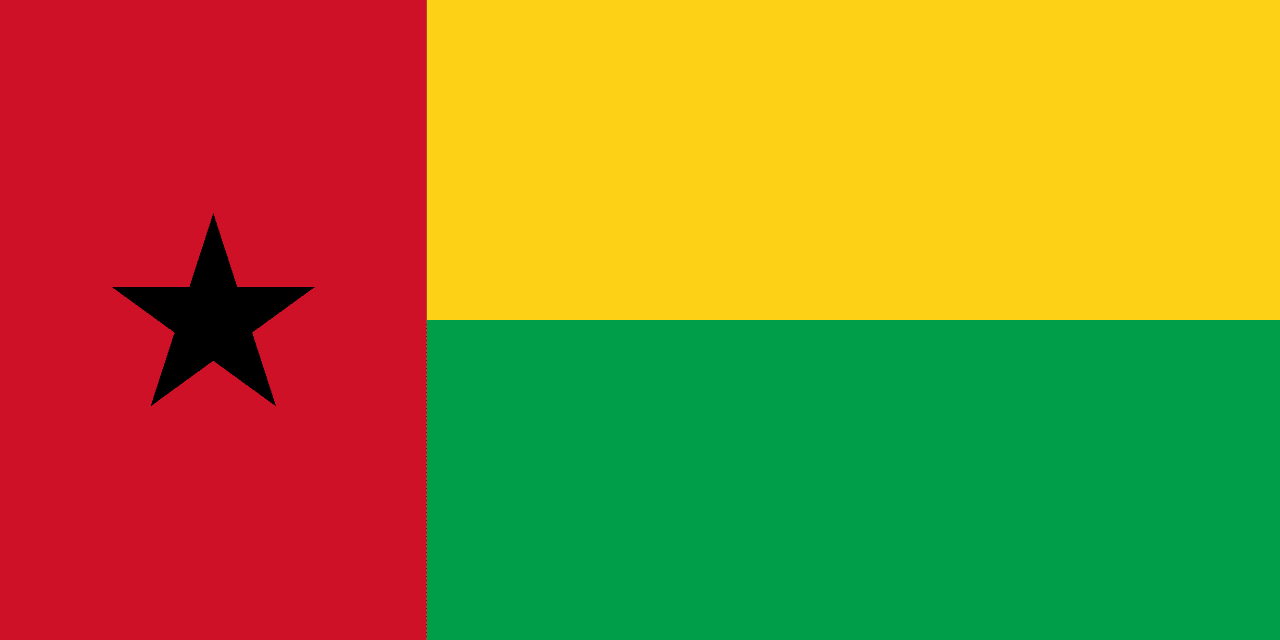
Symbolism
Red Vertical Stripe: Represents the blood shed during the liberation struggle against Portuguese colonial rule, symbolizing the sacrifice made by independence fighters and martyrs who died for freedom during the long war of independence.
Black Five-Pointed Star: Represents African unity and the dignity of the African people, symbolizing the connection to the broader Pan-African movement and the solidarity with other African nations in the struggle against colonialism.
Yellow Stripe: Represents the sun and the savanna regions of Guinea-Bissau, symbolizing hope, optimism, and the bright future envisioned for the newly independent nation and its people.
Green Stripe: Represents the forests, vegetation, and agricultural wealth of Guinea-Bissau, symbolizing the country's natural resources, fertility of the land, and the hope for agricultural development and prosperity.
History
- Pre-1446: The region was inhabited by various ethnic groups including the Balanta, Fula, Mandinka, and others, with complex societies engaged in agriculture, fishing, and trade across West Africa.
- 1446-1879: Portuguese exploration and gradual colonization began, with the region becoming a center of the Atlantic slave trade and later a source of agricultural products under increasingly direct Portuguese control.
- 1879-1963: Portuguese Guinea was formally established as a colony, with Portuguese flags representing colonial administration and the exploitation of local resources and people through forced labor and cultural suppression.
- 1956: Amílcar Cabral founded the African Party for the Independence of Guinea and Cape Verde (PAIGC), beginning organized resistance against Portuguese rule and developing the ideology that would inspire the flag design.
- 1963-1974: The Guinea-Bissau War of Independence began, with PAIGC guerrillas fighting Portuguese forces in a protracted liberation struggle that became one of Africa's longest independence wars.
- September 24, 1973: Guinea-Bissau unilaterally declared independence in liberated areas, adopting the current flag design created by PAIGC to represent the new republic even while fighting continued.
- September 10, 1974: Portugal officially recognized Guinea-Bissau's independence following the Carnation Revolution in Lisbon, ending centuries of colonial rule and confirming the flag as the symbol of the sovereign nation.
- 1974-Present: The flag has represented Guinea-Bissau through political instability, multiple coups, economic challenges, and ongoing efforts to build stable democratic institutions in one of the world's poorest countries.
Trivia
- Guinea-Bissau is one of the smallest countries in mainland Africa, with an area roughly the size of Belgium or Maryland.
- The flag represents a country that includes the beautiful Bijagós Archipelago, a UNESCO Biosphere Reserve known for its unique culture and biodiversity.
- Amílcar Cabral, the independence leader who inspired the flag, is considered one of Africa's greatest liberation theorists and was assassinated just months before independence.
- Guinea-Bissau is the world's sixth-largest producer of cashew nuts, with cashews being the country's main export and economic lifeline.
- The flag flies over a country with no mountains, consisting entirely of coastal plains, swamps, and low-lying areas prone to flooding.
- Guinea-Bissau has experienced more military coups and political instability than almost any other African country since independence.
- The country's population includes over 20 ethnic groups, with Balanta being the largest, followed by Fula, Mandinka, and Papel peoples.
- Bissau, the capital, was an important slave trading port during the colonial period and remains the country's largest city and main port.
- The flag represents a country where Portuguese is the official language, but Kriol (a Portuguese-based creole) is more widely spoken as a lingua franca.
- Guinea-Bissau's economy is among the world's smallest, heavily dependent on agriculture, fishing, and cashew exports.
- The flag flies over a country that has become a major transit point for drug trafficking from South America to Europe, earning it the nickname 'narco-state.'
- Guinea-Bissau has one of the world's highest infant mortality rates and lowest life expectancies, reflecting severe challenges in healthcare and development.
- The Bissagos people of the archipelago have a unique matriarchal society where women hold significant power in social and political affairs.
- Rice is the staple food and main agricultural crop, grown in flooded fields similar to those found in Asian rice-growing regions.
- The flag represents a country that has struggled to overcome the legacy of colonial exploitation and has received limited international attention despite its significant challenges.
Related Countries
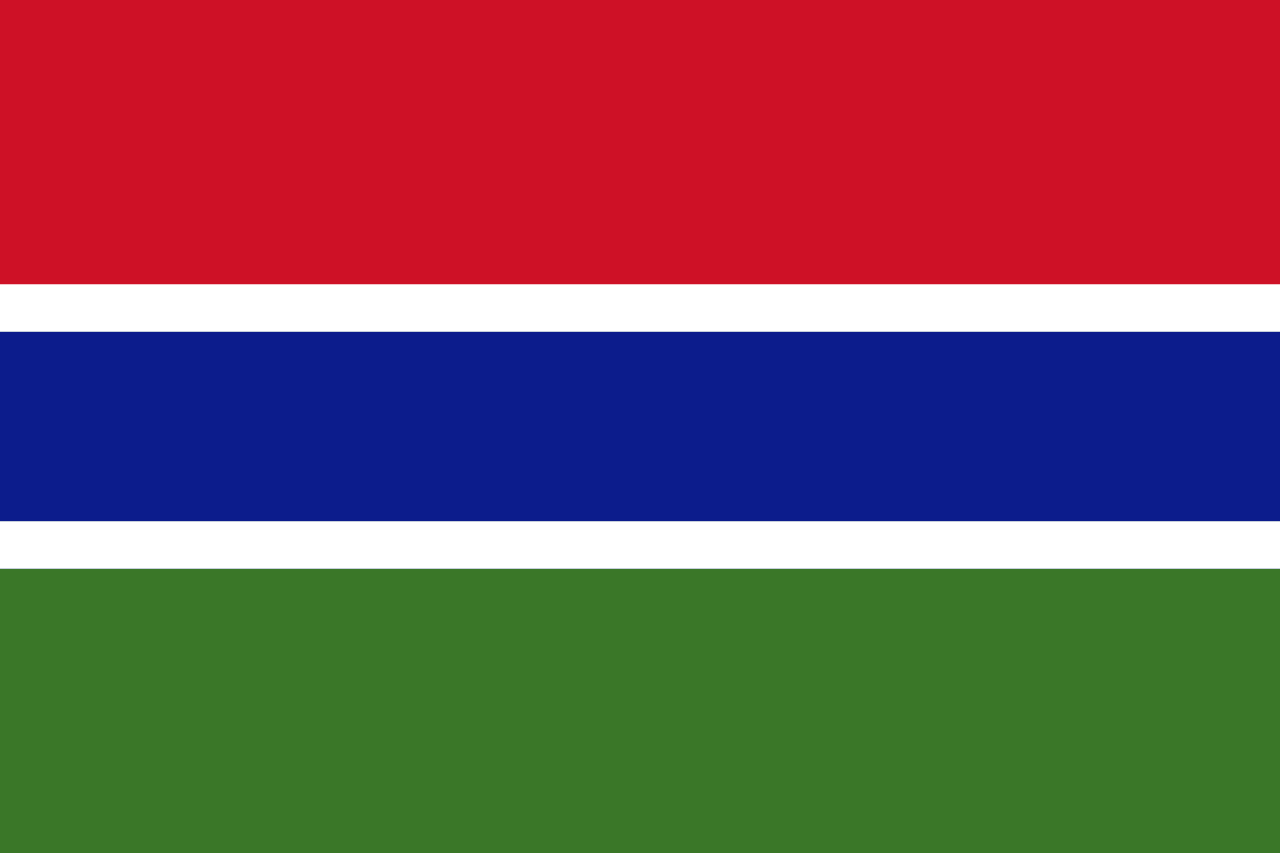
Gambia
Africa
Three horizontal stripes of red, blue, and green separated by thin white stripes, representing the sun, the Gambia River, agriculture, and peace, symbolizing the natural beauty and harmony of the smallest mainland African nation.
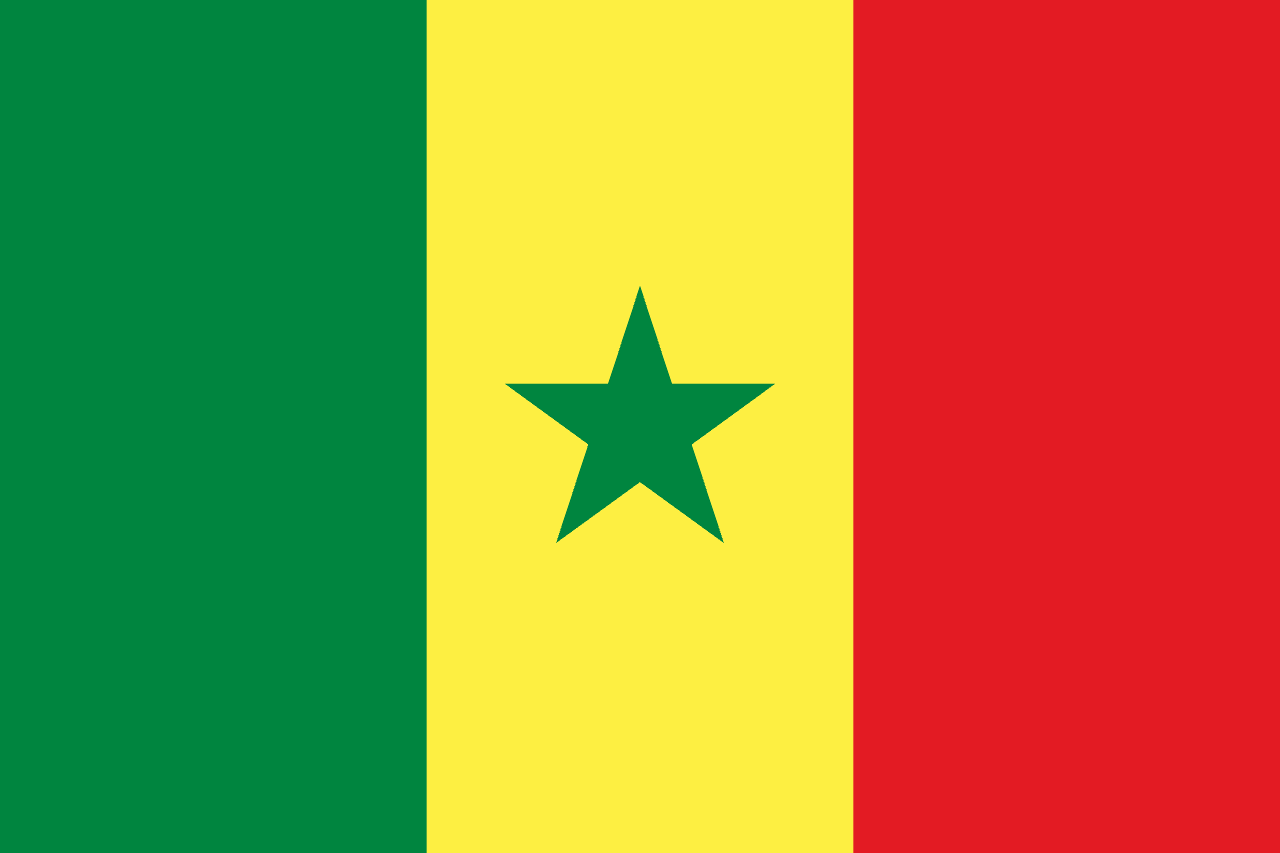
Senegal
Africa
A vertical tricolor of green, yellow, and red with a green five-pointed star centered in the yellow band. The flag reflects Pan-African identity and national unity.
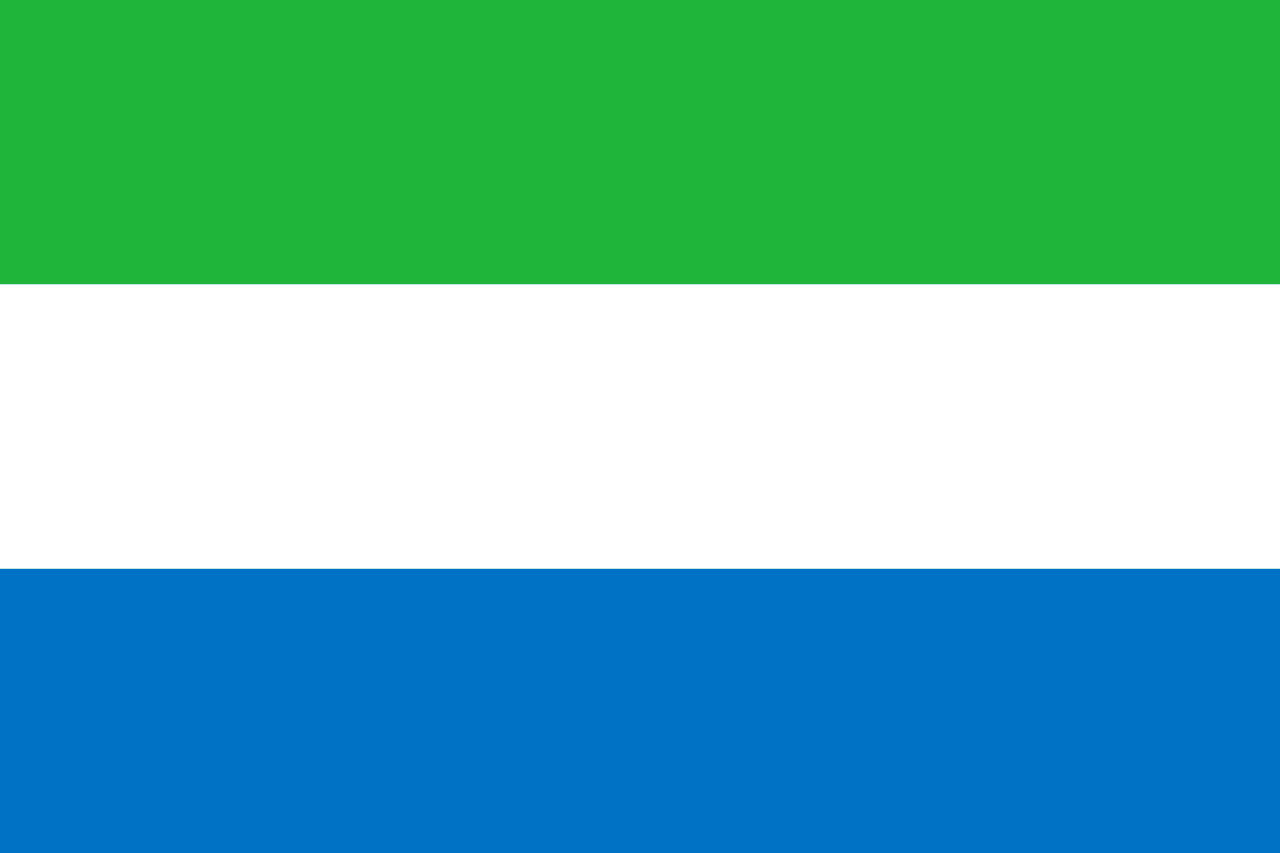
Sierra Leone
Africa
A horizontal tricolor of green, white, and blue, symbolizing the land, unity and justice, and the sea and hope, adopted at independence in 1961.
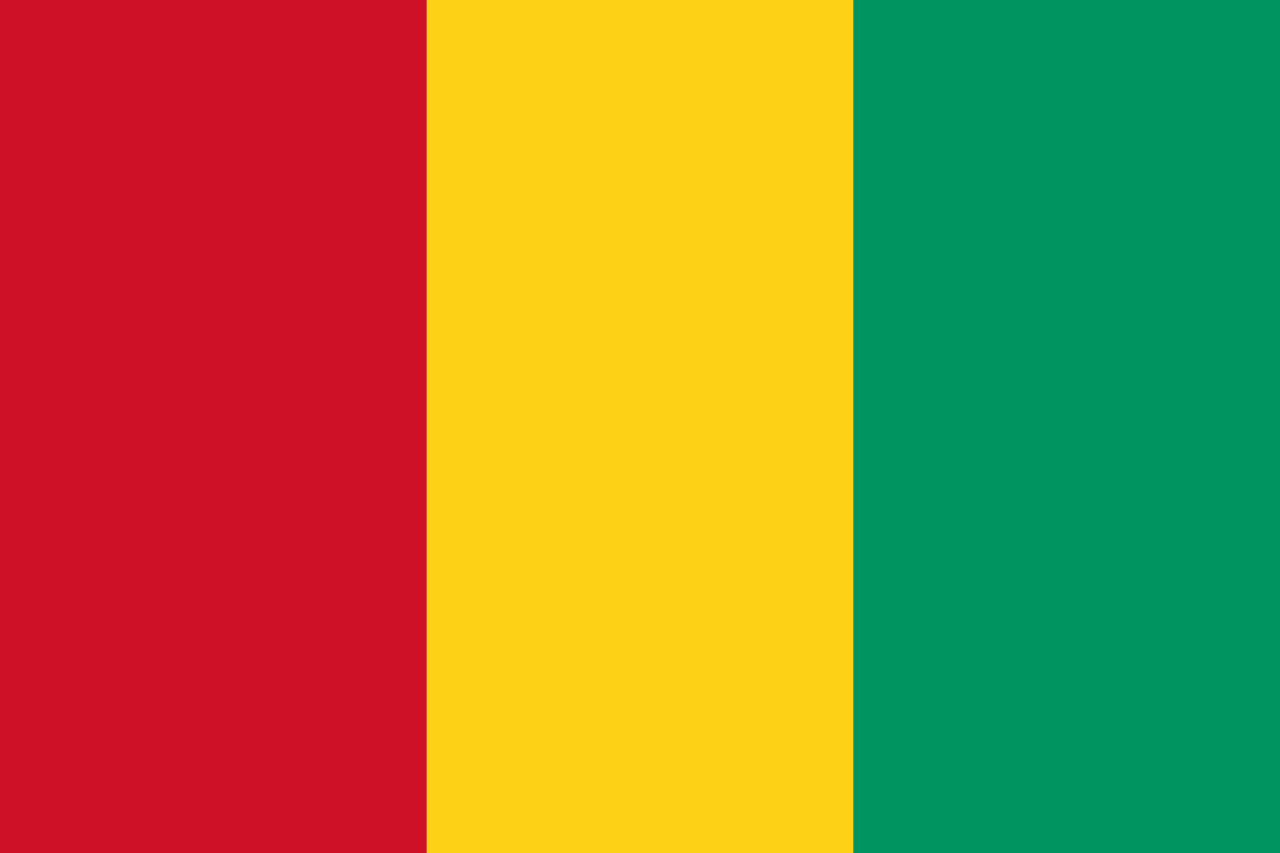
Guinea
Africa
Three equal vertical stripes of red, yellow, and green representing the Pan-African colors, with red symbolizing sacrifice, yellow representing the sun and mineral wealth, and green representing the country's vegetation and agriculture.
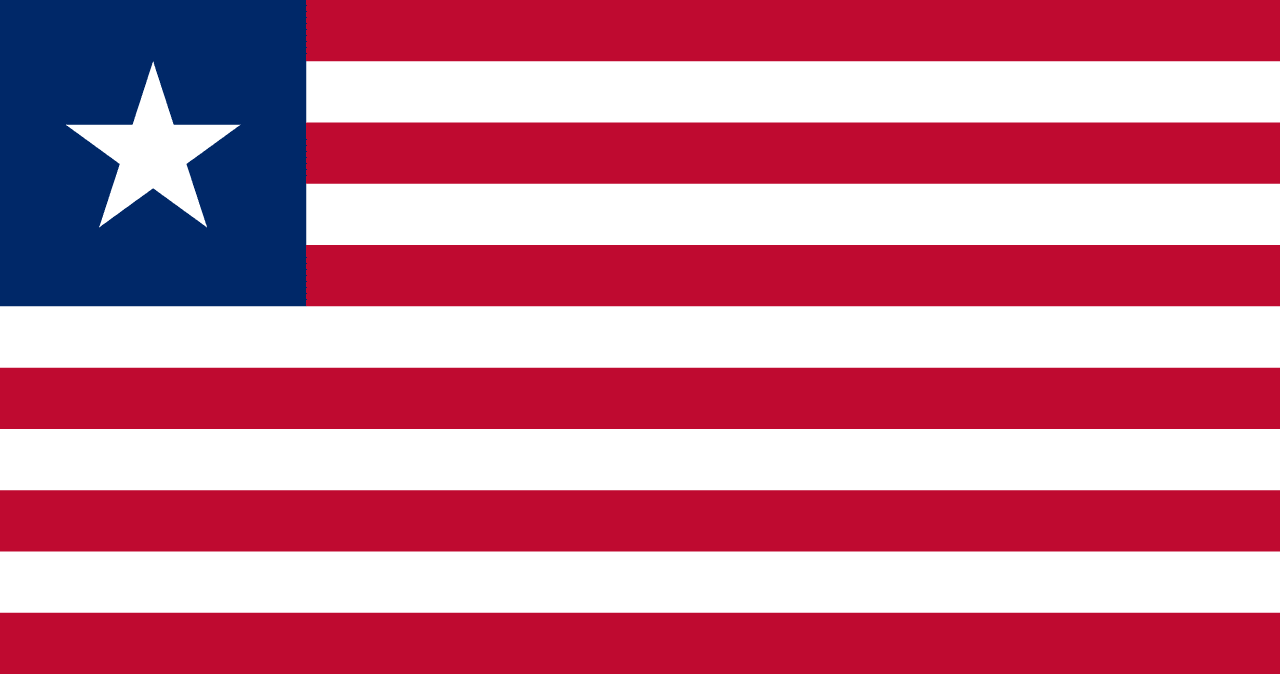
Liberia
Africa
Eleven alternating red and white stripes with a blue canton containing a single white five-pointed star, representing Africa's first republic founded by freed American slaves and its role as a beacon of freedom on the continent.
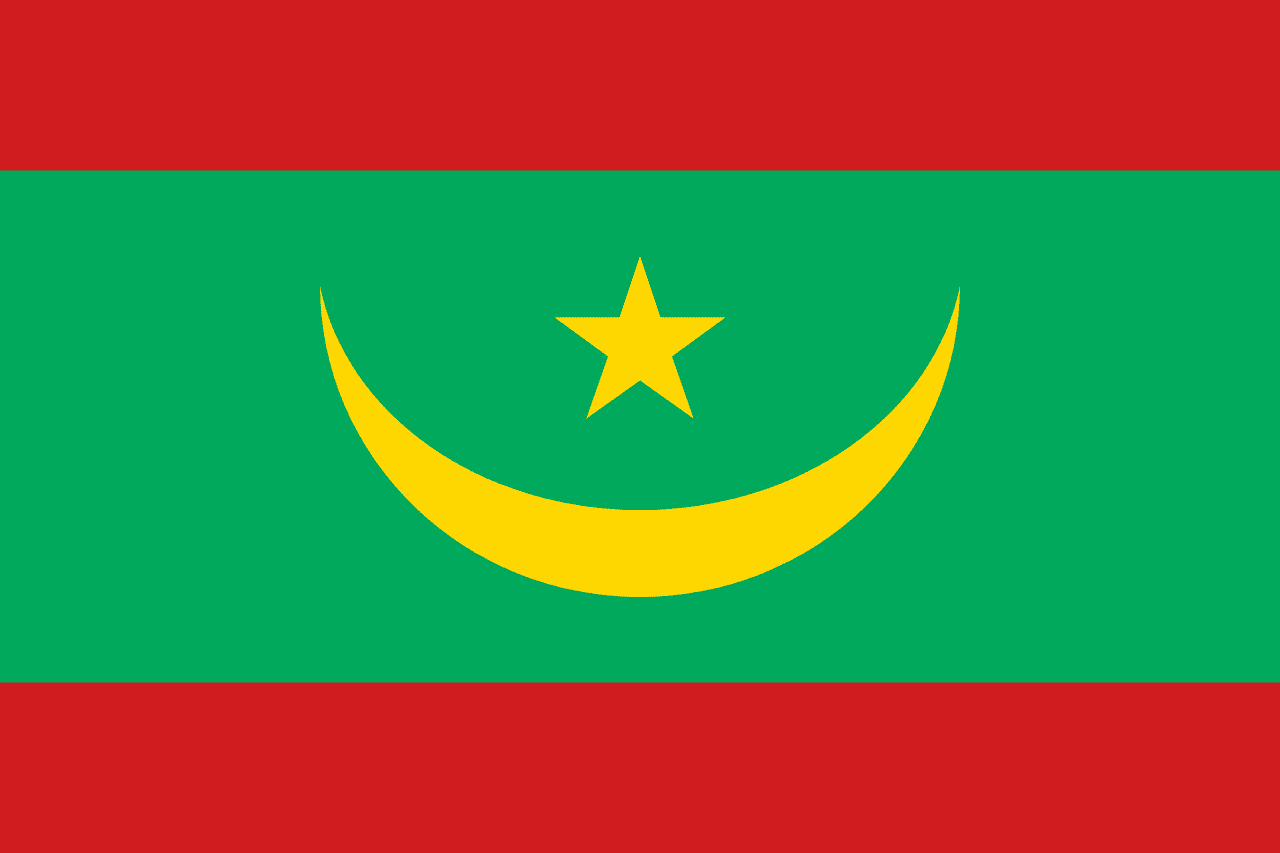
Mauritania
Africa
A green field with yellow crescent and star, bordered by red stripes at top and bottom, representing Mauritania's Islamic identity, the Sahara Desert, and the blood of those who defended the nation.